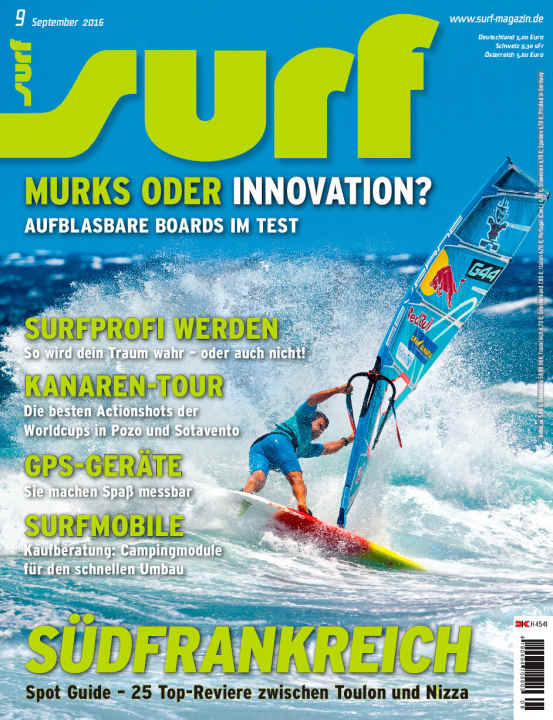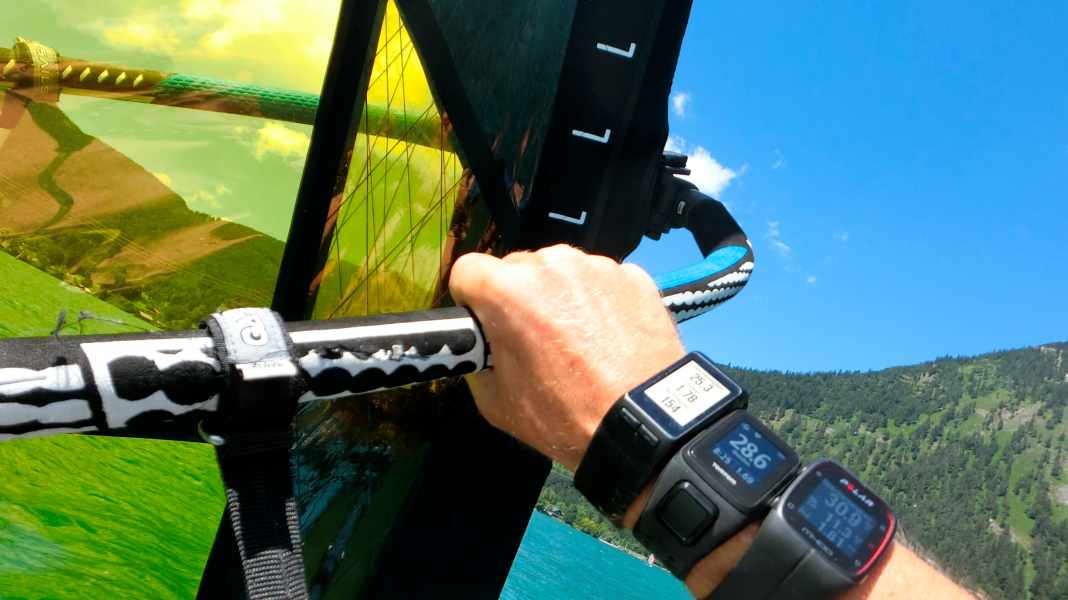

"Come on!" "Time to move!" "Hum hum hum..." These fitness watches are nothing for cosy contemporaries. You've just settled down comfortably on the sofa when something vibrates or buzzes - in our case, one of three watches - and urges you to get moving. In addition to the most interesting function for us - GPS tracking and speed measurement - your acceleration is inevitably measured when walking or climbing stairs, but also when you slow down on the couch. If the stoic prompts of the animator on your wrist lead you to "sport" from your office desk to the coffee kitchen five times a day and pour a double espresso into your left ventricle, you don't know whether this is in the spirit of the actual health programme. In any case, it promotes social fitness. For this comparison, however, we were primarily interested in the windsurfing functions, which are all about speeed...
Speed measurement
Fortunately, all watches and apps record both speed and distance with good accuracy. The subtleties lie in the details. While the apps on your mobile phone run somewhere in the waterproof case in your surf shorts or under your wetsuit, the watches show you the current status at all times. The Polar watch reacted a little slower and also displayed a slightly lower Vmax later in the recording. However, the slightly delayed display can also be an advantage: if you go at top speed for several seconds under tension and then, after a short breather, actually slow down again when you look at your watch. The Polar watch will then still show you the status from a second or two ago, whereas the TomTom and Garmin react much faster, almost in real time. This becomes an advantage if you only ride a top speed peak for a very short time, one or two seconds. Our impression was that the Polar watch may not even notice this. In any case, we always had the "best" top speed on the Garmin device after several runs. Here, the display reacted immediately to every pull up, drop and tense. A typical pattern of top speed recordings after a half-hour session showed 43.4 km/h on the Garmin watch, 43.1 km/h on the TomTom and 41.3 km/h on the Polar.
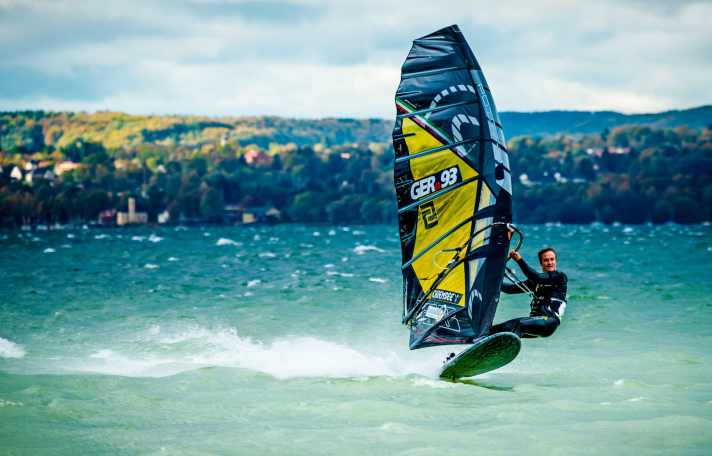
Tracking
All apps and watches use GPS to record the route you have travelled. Overlay on a map from Google Maps is standard. This means that the speed you have travelled can be subsequently assigned to your exact position and you can filter out your best bits. The run that feels the fastest is often not the fastest. If you catch a mirror-smooth "downhill section", it may not be as adrenaline-inducing as a bumpy ride over choppy water, but the speedometer will usually show you going faster.
Heart rate measurement and training
This is where the origins and strengths of the Polar trainer lie, this is its home turf. Whether it's designing training plans in advance, analysing or the fitness test (to determine the lactate threshold), the Polar watch has it all. Heart rate measurement with a chest strap may seem a little "old school", but it is the only accurate measurement method. In comparison, the other two watches were either only generally correct, but sometimes also significantly off the mark. In the test, TomTom and Garmin with wrist measurement tended to show slightly less (the skin is illuminated by diodes, light is reflected from the but in the blood vessels and measured in a photocell).
A large selection of GPS watches is available from: Mountain time , Sports cheque or Tradeinn .
Smart Watch
Clearly, Garmin is the winner in this discipline. No other watch can be upgraded with so many widgets, new display designs and additional apps. SMS, WhatsApp and other messages can also be received on the watch display via Bluetooth transmission.
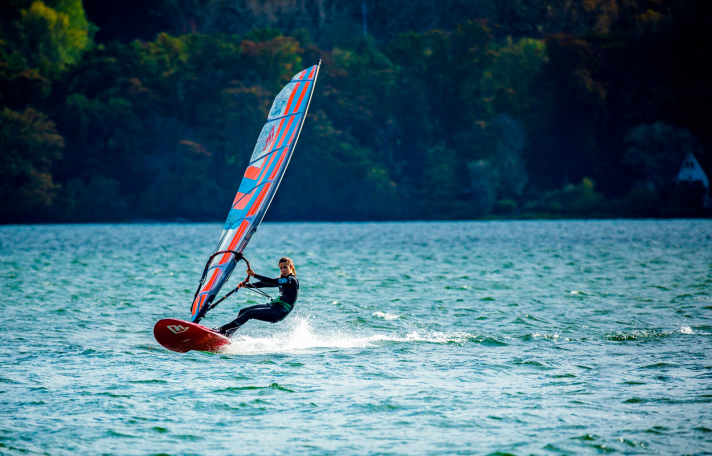
Watch or app?
The GPS watches are waterproof by design and do not interfere with surfing. You will need a waterproof case for your mobile phone, preferably with a Velcro strap for the upper arm for proper reception. The apps are varied and range from free to inexpensive. The watches already offer heart rate measurement, and an additional Bluetooth heart rate chest strap for Runtastic or Sports Tracker costs another 50 euros from Polar, for example.
Watch out mobile phone haters
All GPS watches work in conjunction with corresponding accounts on the websites. All data can be archived and analysed there. Establishing the connection via the supplied cables worked perfectly, as did the data transfer; for a quick check, corresponding apps can also be downloaded to each watch on the mobile phone, but these require reasonably up-to-date operating systems, at least Android 4.4 is helpful. In addition, problems with synchronisation are to be expected, depending on the app version, the mobile phone and other unpredictable factors, some of which remained unknown to us.
surf recommendation
The free apps are great for getting started if you want to take your mobile phone with you when windsurfing. Sports Tracker would be our favourite. When it comes to watches, endurance athletes choose the Polar - because of the safe training options via accurate heart rate measurement. For the nerd who has always had his eye on the Apple Watch, the Garmin model with its many additional functions is a good choice. TomTom is recommended if you want GPS recording and a music player "from a single source".
If you want to post your sessions in speed rankings, you need the GPSLOGIT app (page 42) with professional analysis options at a reasonable price. No matter what you choose: the incentive to set the next speed record is more motivating than any app prompt to climb the stairs.
FREE APPS
Both are good for running and cycling. One is slightly better for speed tracking.
RUNTASTIC
Price:free of charge
The popular app offers the most important functions, but unfortunately the free version also shows all inactive Pro functions and lots of adverts. We liked the option of displaying the different speed ranges in colour in the track display.
PLUS Free, offers the basic functions in the app. Windsurfing pre-installed as a sport. MINUS Advertising and display of inactive functions of the premium version (59.99 euros/year)
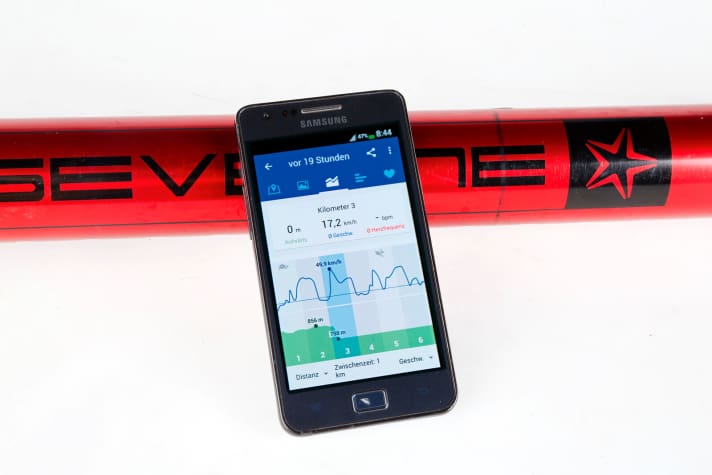
SPORTS TRACKER
Price: free of charge
Even in the free version, the top speed of your session is displayed and the speed can be assigned to the surfed route to the second. You can zoom into the speed graph in great detail in the app on your mobile phone.
PLUSCompatible with HR chest strap even in the free version. Tracking accurate to the secondMINUS Advertising for premium version (24.99 euros/year)
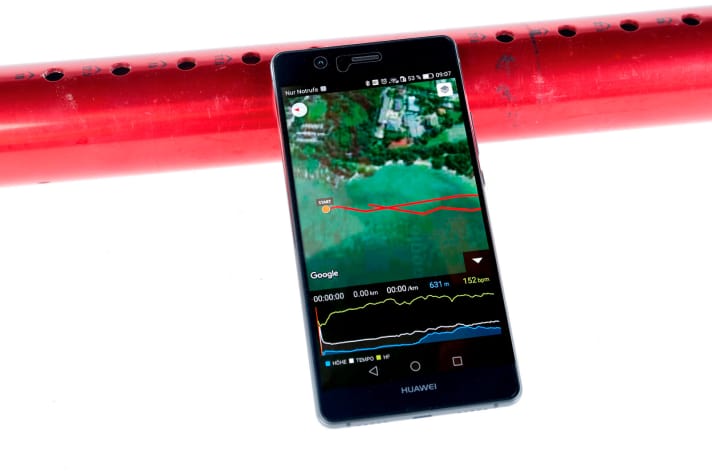
GPS WATCHES
From trendy smart watches to classic training computers: a comparison of three different concepts for speed measurement and tracking.
Garmin Vivoactive HR
Price: 269 Euro
The Garmin watch looks dainty and in the style of the latest fitness trackers. The colour touch display offers many options, such as scrolling and swiping. On the small surface, however, you have to hit the equally small font precisely. In addition to the very fast response when recording speed, the watch impresses, for example, with the transfer of text messages, appointments or WhatsApp messages directly from the mobile phone to the display.
PLUSFastest response to speed changes, additional smart watch functionsMINUS Fat fingers first have to practise aiming on the small touch display
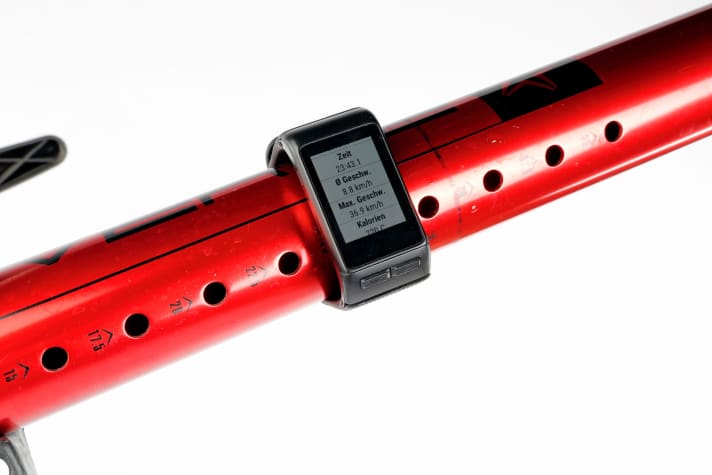
TomTom Spark Cardio + Music
Price199 Euro
The large display shows even small changes in speed almost as quickly as Garmin. Operation via the "rocker" with four switches is almost intuitive. If you like listening to music on the go, you can select the integrated player (functions: play, loud-quiet) with 3 GB memory and wireless transmission to headphones. The training functions and available sport profiles are rather meagre.
PLUSGood usability of the watch. Detailed speed recordingMINUS Comparatively somewhat smaller range of functions
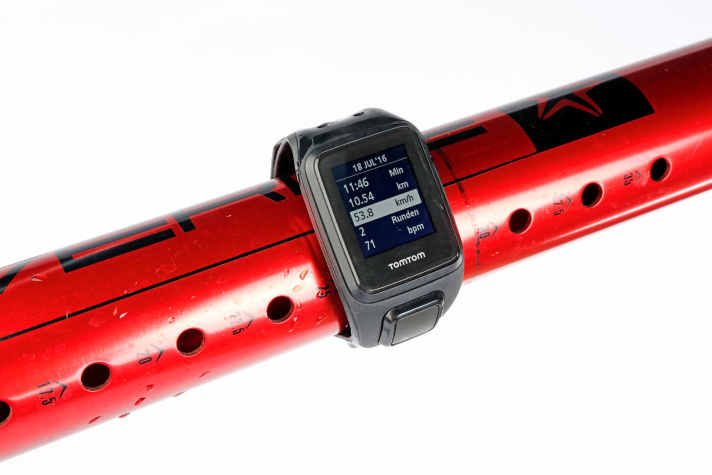
Polar M 400 HF
Price159 Euro
Polar impresses with the most comprehensive training functions and the best heart rate measurement via the chest strap. The speed measurement is somewhat muted, which leads to a delayed display during short speed peaks and very short peaks may not be captured in the final recording. Operation of the watch and website functions are particularly user-friendly and offer a wide range of features.
PLUSIn addition to GPS tracking, it is ideal for training alongside windsurfing (e.g. determining the lactate threshold)MINUS Live display speed slightly delayed
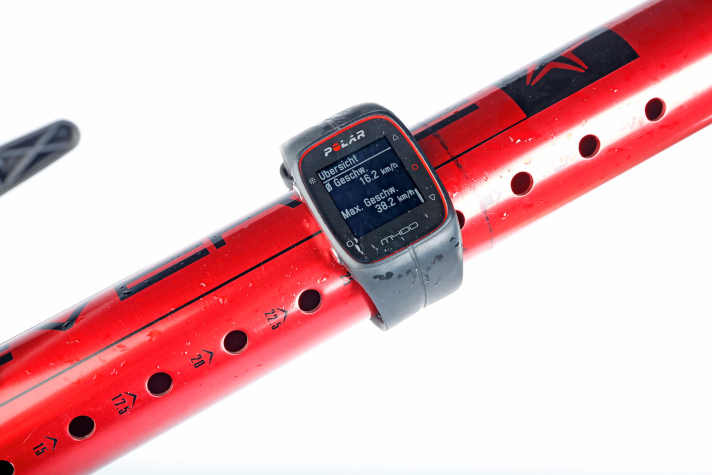
The GPS watch websites
1. garmin connect
The website offers an enormous range of functions. Unfortunately, the speed recording is not accurate to the second, as the watch uses smart tracking to save memory. In times when memory costs less than water, this should actually be outdated. Instead, the respective top speeds and average speeds are displayed for each "lap" of your session, for example one kilometre.
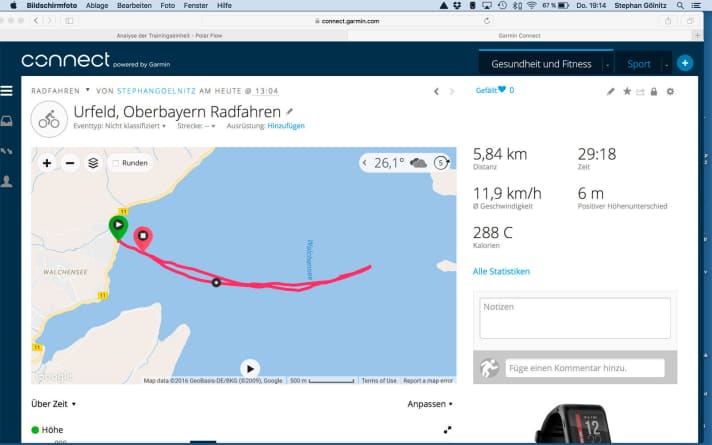
2. tomtom
In your personal web area, the recorded tracks can be tracked beautifully and in almost any resolution (to the second): Course, average speed, max speed, heart rate, all at a glance. There are hardly any training aids here, but your non-windsurfing activity is logged in the form of daily and weekly steps, as is your nightly sleep. Extra gimmick: you can save recorded activities as a "race" and then compete against them next time. The web and app offer the essentials, but can't quite keep up with Polar and Garmin in terms of functionality.
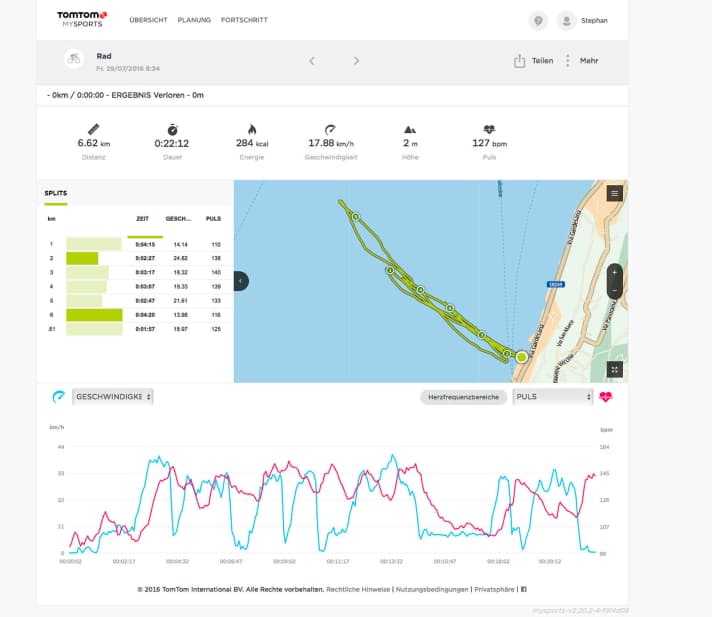
3. polar flow
Polar turns the data presentation on the website into a show. At the click of a mouse ("relive"), the app plays a short film, edited together on Google Maps, with your speed, heart rate data and photos that the web application itself provides from the places you have visited. You can also view the individual daily records in great detail in terms of speed and heart rate and analyse your courses on the map. You can easily select specific sections of your course (e.g. exactly half a stroke across the lake) and analyse them in terms of top speed and average speed. Polar focuses on the training aspects, which show your necessary recovery phases, as well as activities and sleep times.
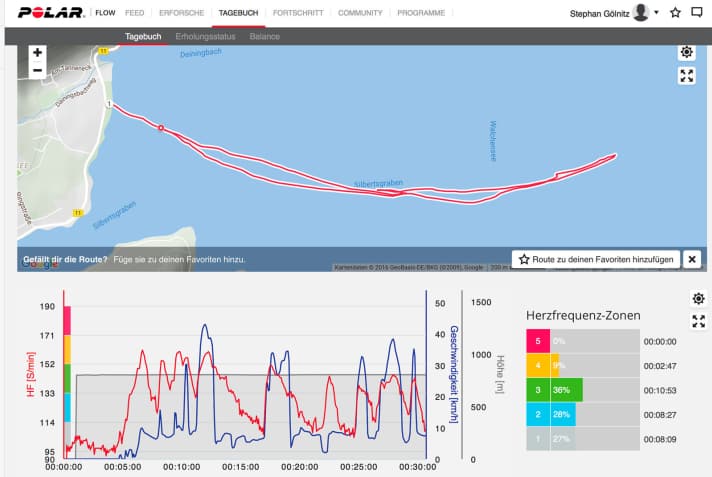
THE PROFI-APP
Only you know that you're actually the fastest pike in the pond? Then it's time for GPS Logit - just to make things clear for everyone.
Only speed veterans remember the elaborately installed laser, radar or video measuring tracks, which were only set up a few times a year for record runs over 500 metres. The Fuerte or Weymouth Speedweeks are legendary, but only for an exclusive club of professional speedboats. With ever-improving GPS measurement, regional, national and international GPS speed rankings have gained in importance and allow anyone to take part, no matter when, no matter where. Depending on the competition, the five best ten-second runs, the fastest 500 metres or other data are used for the ranking, sometimes as an average value from different runs on one day. All of this is included as an evaluation tool in "GPS Logit". The app picks out the fastest sections and displays them in colour on the map. Click to switch between "max speed", "500 metres" or "10 seconds". If required, the values can be uploaded to the corresponding ranking lists - once you have registered there. The international platform is gps-speedsurfing.com, while speed junkies compete on a national level at the German Speed King (http://www.speedwindsurfen.de/german-speedking-2016). As inland surfers in the depths of Bavaria can never keep up with the records on North Sea courses, the "Bavarian Speed Kini" has established itself here ( speed-kini.de ), which takes place exclusively on inland waters in Bavaria. As part of the German Speed Kings, there is also an inland lake competition and, since 2016, state championships have also been held.
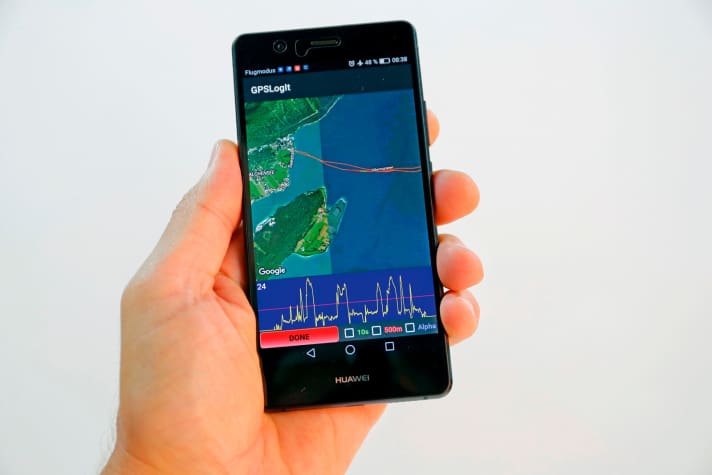
GPS LOGIT price: 17,85 Euro
App from Speedsurfer and software developer Manfred Fuchs. The best way to get into national speed rankings. On modern mobile phones with a good GPS chip, the app replaces the previously only approved speedometer from Locosys, although this is hardly available any more.
PLUS Extremely many speed analyses of your surfing session possible, approved for official GPS rankingsMINUS Not suitable for training in other types of sport
